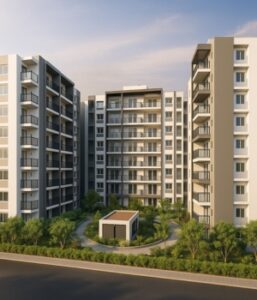
As the world gets more digital, it’s just as important to know how to go about indoors as it is to know how to get around outside. Indoor navigation systems fill in the gaps by helping people easily and accurately find their way around places they don’t know. These technologies, which are sometimes backed up with navigation software, provide GPS-style mapping inside where satellite signals don’t work well. Indoor navigation is made to respond in real time, so individuals can find their way swiftly and confidently without having to rely on signs or physical guides.
How Wayfinding Software Helps Us Get Around Today?
Most indoor navigation systems use wayfinding software as their main motor. It combines maps, information about where users are, and routing algorithms to give step-by-step directions. Outdoor GPS devices have been the most popular for a long time, but wayfinding software has stepped in to fill the gap in inside spaces. Indoor navigation enabled by smart wayfinding software is becoming a standard digital amenity, whether the purpose is to make things less confusing or to make the visitor experience smoother.
How Indoor Navigation Systems Work?
Indoor navigation uses sensors, Bluetooth Low Energy (BLE) beacons, and smartphone features to figure out where a person is in real time. Indoor navigation doesn’t use satellites like outdoor GPS does. Instead, it uses localized signals and technology to find the location of a moving user. Modern wayfinding software uses accelerometers and gyroscopes to process this data and make a “blue dot” position that changes in real time when people walk, turn, or change floors.
Why it is important to be Accurate When Navigating indoors?
Trust in a user is based on accuracy. Without it, navigation systems can be annoying or even make things worse. Indoor navigation systems that use strong wayfinding software may often update location data every half-second. This makes it easy to go from one area to another without any problems. The real-time accuracy makes sure that users always know where they are and where they’re going, especially in places that are big or have several levels.
Blue Dot Technology: Making The User Experience Better
The emergence of blue dot technology, which looks and works like GPS apps but is better for indoor navigation, is one of the biggest advances in this field. The blue dot shows a user’s current location in real time by combining BLE signals, motion sensors, and mapping data. This new feature, which is part of wayfinding software, not only makes directions more accurate, but it also gives customers peace of mind by showing them that they are on the proper path.
The Ability Of Indoor Navigation Solutions To Grow
Indoor navigation is no longer just a specialized feature; it’s a solution that can be used in many different types of buildings. Cloud-based navigation software lets you change routes, entrances, and access points in real time without having to do anything physically. This scalability makes sure that changes in layout or how people use the space don’t affect how people get about. More and more businesses are realizing how useful it is to have dynamic systems that change based on how people move.
How Indoor Navigation And Mobile Devices Work Together?
Smartphones are an important part of finding your way about indoors. Most recent systems work well with both iOS and Android, so users can download a simple app or use web-based tools. The wayfinding software in these apps talks to BLE beacons and motion sensors to show real-time movement that is accurate. This interaction between software and mobile hardware gives users the confidence to navigate even the most complicated interiors.
Why it Matters To Make Indoor Navigation Easy To Use?
Accessibility is an important part of navigation systems that people often forget about. Wayfinding software that works indoors should meet a variety of criteria. For example, it should include voice guiding, be compatible with screen readers, and optimize routes for people who have trouble moving around. An inclusive strategy makes sure that everyone can get clear and easy-to-follow help, no matter how tech-savvy or physically able they are.
Data Insights From Systems For Indoor Navigation
Indoor navigation and wayfinding tools do more than just help people get from one point to another; they also gather useful information. By looking at patterns of movement, how long people stay in one place, and where there are a lot of people, you can make better use of space and resources. These data help operators figure out how customers use their space, which gives them the chance to make layouts, signs, and digital interfaces better.
Lowering stress And Making Things Work Better
Getting lost in a big place can make you stressed, late, and angry. Indoor navigation tries to get rid of these problems by giving you a solid digital guidance at every step. Wayfinding software figures out the best route and changes it in real time based on where the user is. Because of this, customers spend less time roaming around and more time focusing on where they want to go, which makes their experience smoother and more enjoyable.
Combining Indoor Navigation With Systems that Are Already in Place
Modern interior navigation systems are made to work with the digital infrastructure that is already in place, such as well-known scheduling applications and personal assistant apps. Wayfinding software may collect data from appointment systems and automatically plot routes because it can fully integrate with them. This smooth sync turns static navigation into a personalized, proactive guide that changes based on what the user needs in real time.
Conclusion
Intelligent wayfinding software is changing the way we use indoor environments by making it easier to find our way around. These systems offer a full-service navigation experience tailored to each user by integrating cutting-edge BLE technology, mobile integration, and real-time data processing. They do much more than just give directions. It’s clear that having clear and easy-to-find directions is important, whether you’re running a venue or just trying to find your way. Check out Cartogram’s advanced products to see what a next-generation interior navigation system that works with anything looks like.





